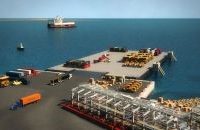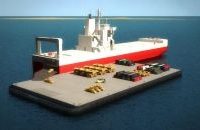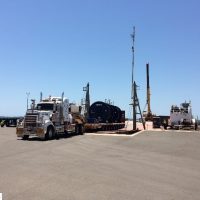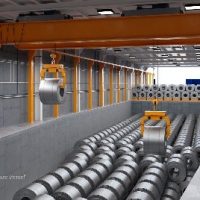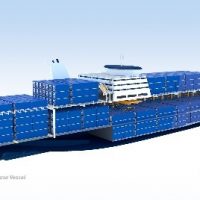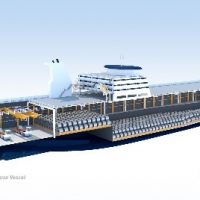Services
We provide a range of highly developed professional services to the maritime and ports industries, governments and leading companies. We offer:
- Innovative logistics and infrastructure solutions through a whole range of service options from consultancy, design, installation, project management and operations. We have key partnerships and networks with leading firms in engineering design, construction and infrastructure finance to provide turn-key developments;
- Professional advisory services across the shipping, freight logistics and ports industries. Our services include marine technical and operations advice as well as specialised trade and business development. Governments have released and publicised our reports.
- Marine technical, inspection, maintenance, management and operations support. We have carried out marine operations and asset maintenance for some of Australia’s leading companies.
Floating deck designs
Our floating deck models are much more than infrastructure. They form logistics systems that are carefully designed to optimise benefits for our client’s core business.
Our current floating deck models include the floating deck (FD) and the floating deck transhipment system (FDTS).
Floating Deck model – FD
The floating deck is designed to remain in a single location with minimum movement to allow large crane operations. The design allows for 3,500 to 4,000 square metre decks (or larger if required) and the ability to modularise the installation. The installation has a high deck strength allowing for cargo stacking and high point loads. It can be entirely hydraulic allowing for fast disconnection times.
The installation has a whole range of applications such as a forward supply base with serviced berths, fuel installation, general cargo stevedoring and bulk handling. The floating deck can be bridged to infrastructure such as a wharf or land-backed facility with a vehicular ramp that has excellent proven operability even in the world’s largest tidal ranges.
The FD model is highly robust and safe and can be very quickly demobilised making it suitable for operations in cyclone prone areas.
An FD model has been used by a leading energy company in Western Australia to support its remote area logistics. The Model FD has evolved as a design platform into a range of other functionalities including:
- The Model FDBT for high volume dry bulk transfer
- The Model FDTC for very large cruise ship operations
- The Model FDTSB for tug and workboat support
- The Model RTP for dry bulk handling in estuarine sites using rotabox equipment.
Floating Deck Trans-Shipment model – FDTS
The floating deck transhipment model uses a moving floating deck that provides a transhipment platform for access by large vessels that otherwise could not access the site.
This model allows for cargo exchange by either RORO or LOLO ships and can rapidly shift multi-thousand tonne cargo shipments. It is supported by shore infrastructure that can include quarantine wash-down facilities and customs licensed premises to facilitate international cargo.
Each floating deck has the capacity to handle routine break-bulk or unitised shipments or giant pre-assembled modules weighing thousands of tonnes.
FDTS infrastructure was developed at Dampier by a consortium of leading companies to facilitate remote area project cargo logistics including the expansion of an ammonium nitrate plant.
Advantages of the floating deck systems
Our logistics systems offer:
- flexible, lightweight and rapidly constructed infrastructure that is safe, robust and able to be used long-term
- fast construction times
- low capital costs
- client specific solutions
- ease of construction
- low environmental impact
- heritage protection
- advanced operational standards and methodology
- ability for rapid expansion
- flexibility
- operational and technical adaptability
- ease of maintenance
- easy adaptability to port services
- sophisticated logistics facilitation
We can help develop complete deal structures for establishing the installations, and design solutions that provide excellent returns for private proponents yet complement public policy objectives.
Model AWV – Automated Warehouse Vessel
The AWV is a STORO-type of general cargo ship that uses digitisation and nanotechnology to greatly improve automation particularly in cargo handling. The design incorporates an ‘automated warehouse’ as a cargo handling and storage facility. The AWV includes an automated cargo lashing system so there is a minimal requirement for manual stevedoring. The vessel uses the latest innovations in dual-fuels, propulsion systems, hull coatings and other features to achieve a very high EEDI compliance. A fully electric cargo handling space eliminates CO2 emission risks in confined areas.
The AWV is a flexible design with easy adaptation between alternative general cargo trades. It is a connected vessel fully integrated with client software and inventory management systems. The AWV is designed as a moving warehouse including off-site receipting and direct ship to store.




